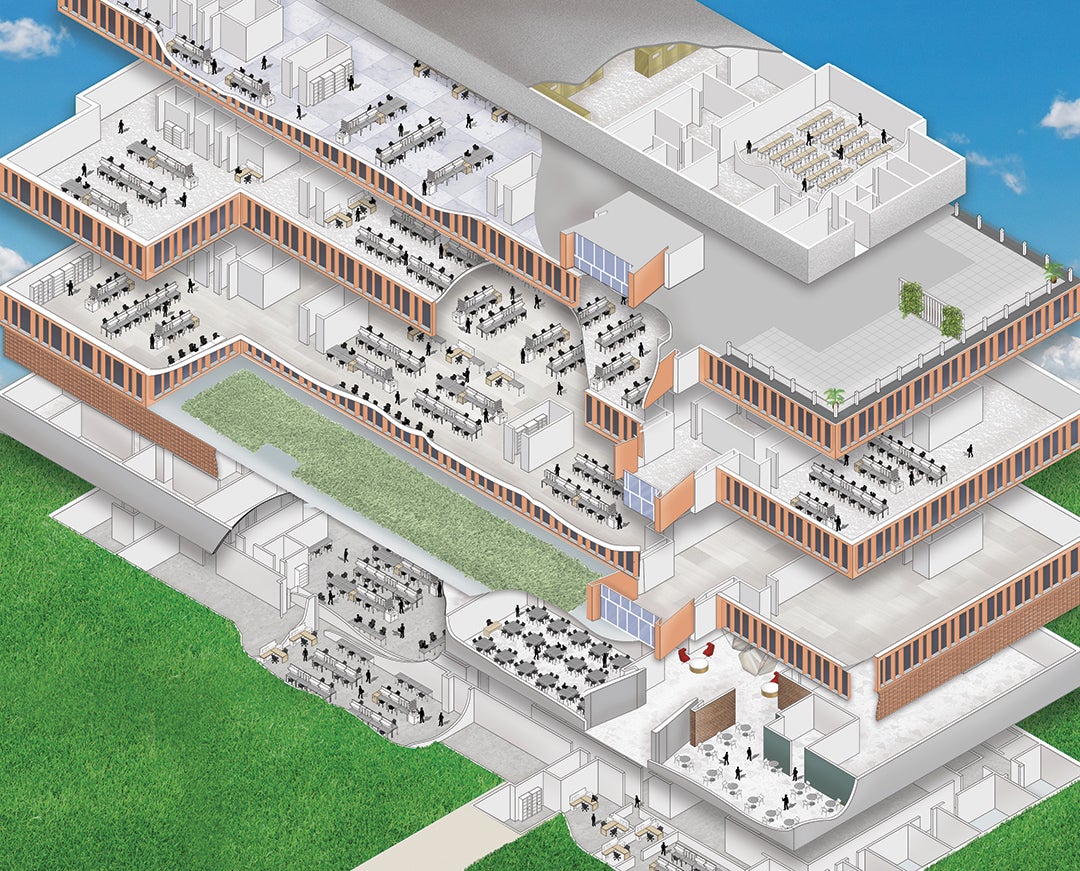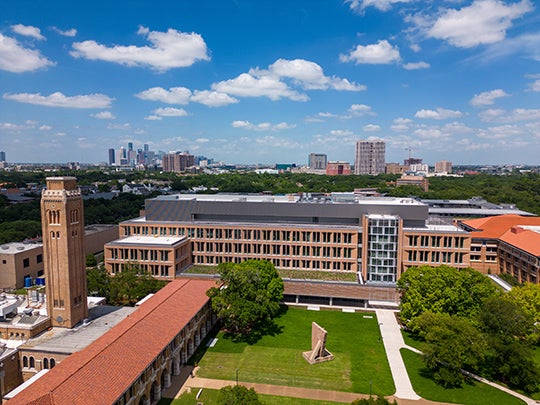Material Worlds
New realms of discovery are anticipated for Rice’s new O’Connor building.

Spring 2024
By Lynn Gosnell
With the opening of the expansive Ralph S. O’Connor Building for Engineering and Science, Rice takes a giant step forward in fostering research innovation and breakthroughs in the material sciences. Occupying the longtime site of the Abercrombie Engineering Laboratory, the 250,000-square-foot building is the largest research facility located in the university’s core campus and the second largest overall. Dedicated last September, the building, designed by Skidmore, Owings & Merrill, honors the late Ralph S. O’Connor, a trustee and one of the most generous donors in Rice’s history.
With four stories above ground and a full basement, the building will ultimately house approximately 50 labs where faculty, postdocs and graduate students from the George R. Brown School of Engineering, the Wiess School of Natural Sciences and Rice’s interdisciplinary research institutes will conduct research, mentor and teach.

“As we build out, you’re going to see a whole lot of intermingling of people and ideas, and that’s what this building was built for — to mix people up in a smart way to do interesting research in materials, energy, sustainability research and more,” says chemical and biomolecular engineer Michael Wong, whose lab was one of the first to move into the new building.
The illustration above captures the depth and breadth of the world of discovery that’s underway for the O’Connor Building. For example, among the many academic labs on the basement level, one can find materials science — including those dedicated to the new Rice Advanced Materials Institute — and nanoengineering research, with optics labs. Also here, Rice’s Shared Equipment Authority provides key support and research capabilities for scholars.
The ground floor includes many collaborative study spaces, large classrooms and an already bustling cafe, as well as Tomás Saraceno’s stunning sculpture, Crux Australis 68.00, which was commissioned by Rice’s Moody Center for the Arts. On the second floor, researchers in civil and environmental engineering, chemical and biological engineering, and chemistry are among the academic labs flanking a central hallway. Engineering and science labs share the third floor with the Rice University National Security Research Accelerator, and computer science and engineering labs find homes on the fourth floor. The top floor features a multipurpose event space and an outdoor terrace overlooking the campus and beyond.
